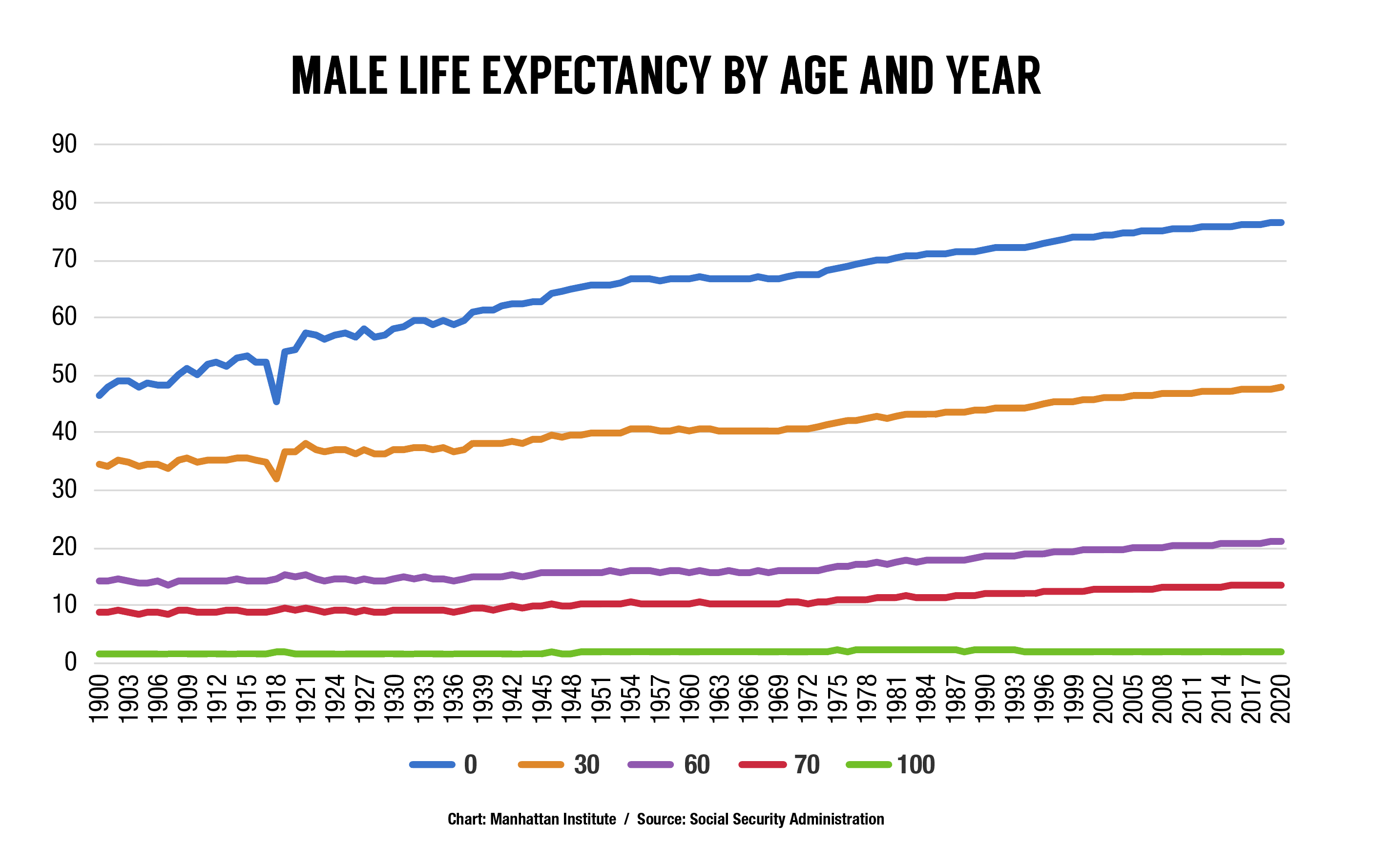 Over the last 120 years Americans experienced huge gains in life-expectancy. The figure above shows years of life expectancy (on the y-axis) at different years in American history (shown on the x-axis) for American men of different ages (0, 30, 60, 70, and 100). Life expectancy from birth increased about 30 years between 1900 and 2020. Most of the increase came from surviving childhood. Though, at every age, Americans can now expect to live longer. 30-year-olds can expect 10 more years than they did 120 years ago and even 100-year-olds gained 6 months.
Over the last 120 years Americans experienced huge gains in life-expectancy. The figure above shows years of life expectancy (on the y-axis) at different years in American history (shown on the x-axis) for American men of different ages (0, 30, 60, 70, and 100). Life expectancy from birth increased about 30 years between 1900 and 2020. Most of the increase came from surviving childhood. Though, at every age, Americans can now expect to live longer. 30-year-olds can expect 10 more years than they did 120 years ago and even 100-year-olds gained 6 months.
One thing that stands out among the trend up is a dip in 1918 for young Americans. The Spanish Flu hit young Americans so hard life expectancy at birth decreased 7 years in a single year! Meanwhile life expectancy for older Americans barely changed, it actually increased slightly during that pandemic.
What can we expect from COVID-19? It is likely that the opposite will happen. Younger Americans may see little change or even a slight increase because they've spent less time driving. But older Americans, especially over 75 will probably see more of a drop.
Allison Schrager is a senior fellow at the Manhattan Institute. Follow her on Twitter here.
Interested in real economic insights? Want to stay ahead of the competition? Each weekday morning, e21 delivers a short email that includes e21 exclusive commentaries and the latest market news and updates from Washington. Sign up for the e21 Morning eBrief.
Don Ipock/Getty Images
